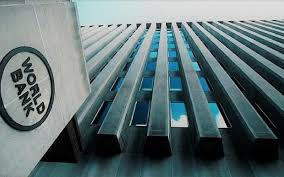World Bank Report: By 2030, Indian cities to create 70% of jobs but may lose $5 bn to floods; need greater autonomy to counter climate risks

India’s cities are poised to become the engines of national economic growth, but they’re also increasingly vulnerable to climate-induced disasters. According to the latest World Bank report, titled “Towards Resilient and Prosperous Cities in India,” urban areas are expected to generate 70% of new jobs by 2030. However, without urgent climate-resilience planning, Indian cities could face annual flood-related losses exceeding $5 billion.
This contradiction highlights a growing dilemma: while cities are driving the country’s economic future, they remain ill-prepared to withstand the impacts of climate change.
💼 Jobs Boom: Cities to Drive Economic Transformation
The report positions Indian cities as critical economic hubs. With rapid migration, rising population density, and digital infrastructure expansion, urban areas are set to produce the majority of future employment. From tech startups to service industries and manufacturing hubs, cities are becoming magnets for both investment and labor.
Yet, this boom comes with consequences. The influx of people and businesses puts immense pressure on urban infrastructure, land, water systems, and local governance—already strained in many municipalities.
🌧️ $5 Billion Flood Risk: Climate Vulnerability is Rising
Climate risks are growing rapidly across India’s urban landscape. The World Bank estimates that urban flooding currently causes over $4 billion in annual losses, and this could rise to $5 billion by 2030. Monsoons are becoming more erratic, drainage systems are overwhelmed, and construction in low-lying areas is exacerbating the crisis.
By 2070, without intervention, the damage from urban floods could climb to a staggering $14 to $30 billion annually. Cities like Mumbai, Chennai, and Guwahati have already witnessed repeated deluges in recent years, disrupting lives, livelihoods, and economies.
🔥 Heat Stress: A Silent Threat to City Life
While floods make headlines, extreme heat is a more insidious and growing hazard. The report reveals that “dangerous heat person-hours” in India’s top 10 cities increased from 4.3 billion to over 10 billion annually between 1983 and 2016.
This means that millions are working and living under conditions that can cause serious health risks or even death. By 2050, heat stress could lead to 328,000 deaths per year, more than double the current figure. In some cities, up to 3.2% of local GDP could be lost annually due to heat-related productivity declines and infrastructure stress.
🏛️ Weak Governance: The Need for Stronger City Autonomy
One of the report’s most urgent findings is that Indian cities lack the autonomy to effectively plan for and address climate challenges. Many are governed by state-appointed administrators rather than elected mayors. Budgetary decisions are centralized, and multiple overlapping agencies often delay or derail local initiatives.
This fragmented governance leaves cities unable to respond quickly to climate emergencies or invest in long-term resilience planning.
The World Bank recommends empowering Urban Local Bodies (ULBs) with real decision-making authority and direct access to funds. Greater transparency, accountability, and local control are seen as essential to meeting the dual challenges of urban growth and climate adaptation.
💰 A $2.4 Trillion Climate Infrastructure Gap
Urban India will need to invest at least $2.4 trillion by 2050 in climate-resilient infrastructure to safeguard homes, roads, drainage, waste systems, and public transport. This figure could rise to $10–13 trillion by 2070 if climate risks intensify without proactive planning.
Currently, India spends only about 0.7% of its GDP on urban infrastructure, far below the global average. The report urges a major shift toward blended finance models, involving both public investment and private sector partnerships. It also recommends expanding green bonds, municipal bonds, and climate finance access.
🧩 The World Bank’s Five-Point Reform Plan
To address these complex challenges, the report outlines a comprehensive “Five Is” framework:
- Information – Improve city-level climate data and risk mapping.
- Incentives – Reform land, labor, and regulatory systems to promote sustainable urban development.
- Insurance – Expand access to climate risk insurance, especially for vulnerable populations.
- Integration – Coordinate climate plans across local, state, and national levels.
- Investment – Mobilize large-scale funding from public and private sectors for resilient infrastructure.
This framework seeks to transform Indian cities into climate-smart, economically inclusive, and administratively empowered spaces.
🔍 Conclusion: A Defining Decade for Indian Cities
The coming decade will determine whether India’s cities become thriving centers of opportunity—or battlegrounds for climate resilience. While the promise of job growth is real, so is the peril of unchecked urbanization in the face of climate change.
The World Bank’s warning is clear: cities must be empowered—financially, politically, and technically—to build for a future that is not only prosperous but also prepared. India’s growth story will be written in its cities. Whether that story ends in resilience or regret depends on the choices made today.






